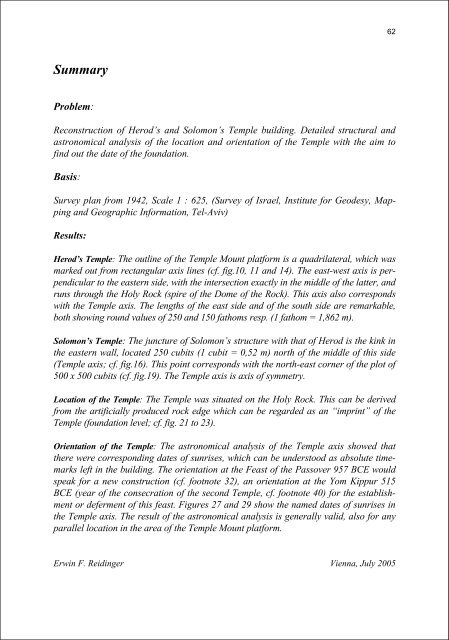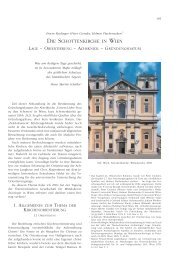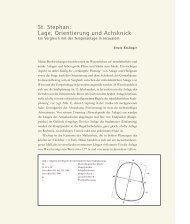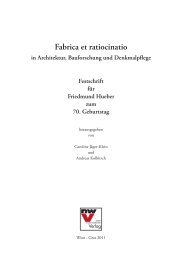Die Tempelanlage in Jerusalem von Salomo bis ... - Erwin Reidinger
Die Tempelanlage in Jerusalem von Salomo bis ... - Erwin Reidinger
Die Tempelanlage in Jerusalem von Salomo bis ... - Erwin Reidinger
Erfolgreiche ePaper selbst erstellen
Machen Sie aus Ihren PDF Publikationen ein blätterbares Flipbook mit unserer einzigartigen Google optimierten e-Paper Software.
62<br />
Summary<br />
Problem:<br />
Reconstruction of Herod’s and Solomon’s Temple build<strong>in</strong>g. Detailed structural and<br />
astronomical analysis of the location and orientation of the Temple with the aim to<br />
f<strong>in</strong>d out the date of the foundation.<br />
Basis:<br />
Survey plan from 1942, Scale 1 : 625, (Survey of Israel, Institute for Geodesy, Mapp<strong>in</strong>g<br />
and Geographic Information, Tel-Aviv)<br />
Results:<br />
Herod’s Temple: The outl<strong>in</strong>e of the Temple Mount platform is a quadrilateral, which was<br />
marked out from rectangular axis l<strong>in</strong>es (cf. fig.10, 11 and 14). The east-west axis is perpendicular<br />
to the eastern side, with the <strong>in</strong>tersection exactly <strong>in</strong> the middle of the latter, and<br />
runs through the Holy Rock (spire of the Dome of the Rock). This axis also corresponds<br />
with the Temple axis. The lengths of the east side and of the south side are remarkable,<br />
both show<strong>in</strong>g round values of 250 and 150 fathoms resp. (1 fathom = 1,862 m).<br />
Solomon’s Temple: The juncture of Solomon’s structure with that of Herod is the k<strong>in</strong>k <strong>in</strong><br />
the eastern wall, located 250 cubits (1 cubit = 0,52 m) north of the middle of this side<br />
(Temple axis; cf. fig.16). This po<strong>in</strong>t corresponds with the north-east corner of the plot of<br />
500 x 500 cubits (cf. fig.19). The Temple axis is axis of symmetry.<br />
Location of the Temple: The Temple was situated on the Holy Rock. This can be derived<br />
from the artificially produced rock edge which can be regarded as an “impr<strong>in</strong>t” of the<br />
Temple (foundation level; cf. fig. 21 to 23).<br />
Orientation of the Temple: The astronomical analysis of the Temple axis showed that<br />
there were correspond<strong>in</strong>g dates of sunrises, which can be understood as absolute timemarks<br />
left <strong>in</strong> the build<strong>in</strong>g. The orientation at the Feast of the Passover 957 BCE would<br />
speak for a new construction (cf. footnote 32), an orientation at the Yom Kippur 515<br />
BCE (year of the consecration of the second Temple, cf. footnote 40) for the establishment<br />
or deferment of this feast. Figures 27 and 29 show the named dates of sunrises <strong>in</strong><br />
the Temple axis. The result of the astronomical analysis is generally valid, also for any<br />
parallel location <strong>in</strong> the area of the Temple Mount platform.<br />
Erw<strong>in</strong> F. Reid<strong>in</strong>ger Vienna, July 2005









